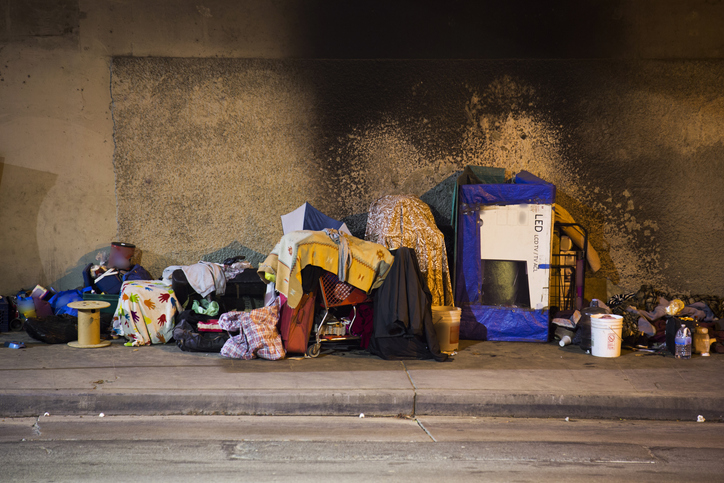By Tom Elias, Columnist
On a de facto basis, Californians have had a right to shelter for many years. But plenty of unhoused people have never had the opportunity to exercise that right and plenty of others just aren’t interested.
Together, these two populations make up much of the approximately 160,000 homeless population in this state on any given night.
Giving them a formal right to shelter would permit any of the unhoused to go to court and demand a roof over their heads; never mind who might have to pay for that.
This suggestion comes from Sacramento Mayor Darrell Steinberg, a former president of the state Senate who has long fought to improve life for the mentally ill.
The right for individuals to demand their localities provide some sort of shelter is one new aspect of Steinberg’s proposal, not yet adopted by his own city council.
In a formal sense, this Steinberg proposal is novel. But in a de facto world where tent cities of the indigent homeless line streets in many California cities, it’s not. Many cities and counties have expended billions of dollars trying to create housing for the homeless, from large shelters to hotel rooms to colonies of tiny homes. By voting for hundreds of millions of dollars in bonds to create housing for the unsheltered, Californians essentially created a right to a roof even though it was never directly voted on.
Legislators in 2020 voted to make this a formal, legal right, but Gov. Gavin Newsom vetoed it, saying it might cost too much to house everyone who needs a domicile.
What’s really novel about the Steinberg proposal is that besides giving everyone the right to shelter, it also imposes an obligation on the homeless: If this plan is adopted, they would suddenly have an “obligation to accept housing” where it’s offered.
But many thousands of the unhoused want no obligations. They know moving into shelters or tiny homes or sanctioned tent villages in spots acceptable to local governments and residents generally comes with rules. These might cover drug abuse, sanitary standards or a requirement to accept counseling.
Many homeless individuals have told this column they’d rather stay that way than accept one or another such obligation.
Which means the Steinberg plan, despite the sense in Sacramento that it’s unique, is not – except that it would require the city to provide enough housing for everyone who needs it in either permanent structures or other places deemed acceptable.
A key to this plan is the promise that outreach workers (not police) would contact every homeless individual in the city, trying to convince them to accept shelter. If that effort is carried out and fails, the city would then be permitted to remove encampments to keep streets sanitary.
One thing that that’s unclear: Could Steinberg’s plan stand up in court to challenges based on the U.S. Supreme Court’s Boise vs. Martin decision and its ban on removing individuals from public property for sleeping or living there – so long as shelter beds have been made available.
What is clear is that despite all that’s been spent on trying to solve homelessness, and despite plenty of happy talk from politicians, the problem is larger than ever, this state containing more than one-fourth of America’s total homeless populace, the weather perhaps attracting many of them.
It’s possible the Boise decision may have to be challenged and loosened, with new villages for the homeless then being built on vacant land at the peripheries of urban areas. Under that circumstance, persons who refuse to move into shelters because they don’t want rules might be compelled to move away from many places where they now congregate.
For sure, the problem now is reminiscent of squeezing silly putty: Every time a homeless encampment is closed, another one seems to spring up nearby.
The bottom line: There is little reason to deny the unhoused a right to shelter, so long as they accept that shelter and don’t persist in living on sidewalks or in parks. At the same time, it may be time for a stricter, but still quite humane, alternative for those who refuse to exercise their de facto right to a roof.
Email Thomas Elias at tdelias@aol.com. His book, “The Burzynski Breakthrough, The Most Promising Cancer Treatment and the Government’s Campaign to Squelch It” is now available in a soft cover fourth edition. For more Elias columns, visit www.californiafocus.net













